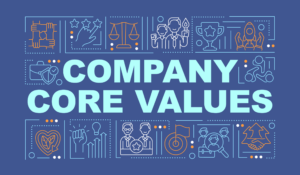Having a committed, engaged workforce is a major key to productivity and quality of work life. The federal government is aware of this reality and wants an engaged workforce so that the resources of the American taxpayer are not wasted.
A few years ago, the yearly Federal Employee Viewpoint Survey, which captures employee perceptions of employee engagement, attitudes, and workplace conditions, revealed that the Occupational Safety and Health Administration (OSHA) did not rank well in terms of employee engagement. For an agency tasked with something as monumental as ensuring workplace safety, this was less than encouraging.
OSHA and its parent agency, the Labor Department, committed to improving the situation and demonstrating improvement in employee engagement, and they have made substantial progress. Employee engagement surveys were a key to their success.
OSHA Realizes Employee Engagement Could Use a Boost
Lackluster employee engagement can drain a business or government agency of a sense of mission and commitment to accomplish goals. The Federal Employee Viewpoint Survey revealed back in 2011 that OSHA’s work was cut out for them; it ranked 141 out of 240 Department of Labor sub-agencies, and as the third largest of Labor Department sub-agencies, this represented a big population of employees who were not as engaged in their mission as they should be.
OSHA was able to identify key employee engagement drivers, like work-life balance, training, and performance feedback, and developed action plans to improve them. For example, they formalized alternative work scheduling and telecommuting policies, created tools for managers to use for providing effective employee feedback, and created training programs for compliance personnel and whistle-blower investigators.
How Do You Get People to Respond to Employee Engagement Surveys?
Employee engagement surveys are terrific in theory. If you want to improve employee engagement, the best way to know what to do is to actually ask the employees, right? Yet traditional employee surveys, issued on paper or online, have many shortcomings. The main problem is actually getting people to bother completing them. Surveys almost always take a low priority, because they represent a time investment, and often people do not feel like there is any payoff for that investment.
Therefore, being able to gain an accurate measure of employee sentiment, let alone putting that information to work in improving employee engagement, requires that employee engagement surveys be presented to the right people, in the right way, at the right time to get candid, thorough responses.
Significant Improvements in Employee Engagement at OSHA
OSHA invested considerable time and energy in improving employee engagement over the five years spanning 2011 to 2016. Qualitative results have been positive, with better participation in employee developmental programs and an easier time filling senior executive positions due to better executive leadership training.
The Federal Employee Viewpoint Survey results from 2016 showed significant improvements when compared to the results from 2011. Seventy-seven of 78 survey questions showed an increase in positive scores, with an average improvement of 3.9 percent on those measures. There were 19 questions where positive scores increased by 5 percent or more.
Now that they are seeing results, OSHA does not plan to just sit back and enjoy the improvement. They are also committed to continual improvement because the workforce, the business environment, and the overall workplace culture all change constantly. Therefore, employee engagement surveys, while useful, must be used over time, rather than as a one-time improvement push.
Traditional Employee Engagement Surveys and Their Disadvantages

The main problem with traditional employee engagement surveys distributed online or on paper is that they rarely show up at a convenient time for the respondent, and it is hard to tell upfront how much of a time commitment is involved in completing a survey. As a result, response rates are consistently low, which brings into question the quality of the data collected.
Online surveys represented a considerable leap in survey quality over paper, because they eliminated the drudgery of pen-and-paper completion, and eliminated the arduous task of collecting and analyzing hand-written results. But people are not thrilled with online surveys either, and response rates can remain dismal.
Why Apps Are Better Suited to this Task
Mobile employee engagement survey apps are far better for improving response rates and making the survey process as convenient as possible for users. Mobile survey apps do not require writing or even typing. Typically they have drop-down menus, sliding scales, and single-tap responses that take a minimal amount of time.
What is more, survey apps can be gamified with incentives, points, and other perks for people who complete them expediently, meaning more data can be collected more quickly. Surveys can also be carefully segmented so that the right questions are asked of the right people based on their role in the organization.
Finally, mobile employee engagement surveys can be automatically pushed to users based on their location. Used strategically, this can boost response rates appreciably by catching employees during times when they are not inundated with other tasks. For example, quick “pulse” survey apps pushed to employees as they step into their building lobby and ride the escalator or elevator (and are often looking at their phones anyway) can deliver high response rates, and built-in analytics can start providing usable insights quickly.
Let the Data Tell the Story – Almost Instantly!
App analytics can revolutionize the employee survey, by allowing creators to get quick insights as well as dig deeper and understand what drives employee attitudes. Data collected from willing survey participants are not only more abundant but also yields better insights because the data comes from a wider swath of the target employee population. Mobility means that this is true regardless of how diverse or geographically scattered a workforce is.
HubEngage is a customizable employee mobile app platform that lets employers create employee engagement surveys with ease, deliver them to the right people at the right time, and collect data immediately. Because it is fully customizable, surveys can be created to ask exactly the right questions and present users with the range of response choices that make the most sense.
You do not have to shoehorn your unique survey into a pre-made template or format because hubEngage allows you complete control over customization. Best of all, you can try the HubEngage app for free and see for yourself what it offers. Ask questions, get answers, and improve employee engagement. The power is in your hands.














